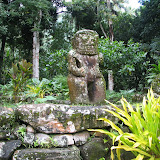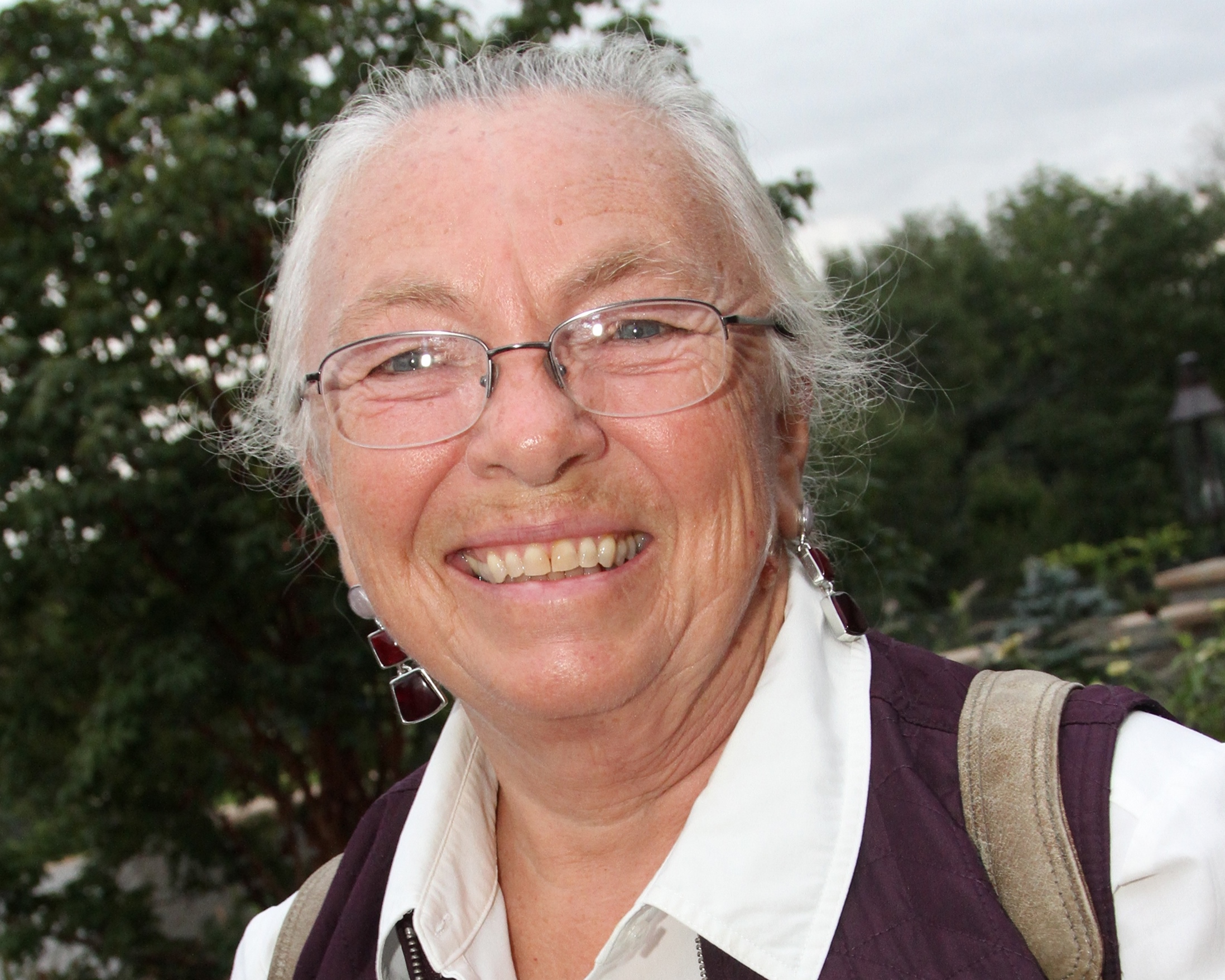Day 218, Year 1: Road Trip to Paumau
Date: Tuesday, May 23, 2006
Weather: Another Liquid Sunshine Day—Sunny Day with Intermittent Downpours
Location: Tahauku Bay Anchorage, Hiva Oa Island, Marquesas
We spent part of today up so high in the mountains that we were in the clouds . . . and then we descended to bays at sea level . . . and then back up and down again. We picked up at our 4-wheel drive rental car on the dock at 7 AM this morning and headed east across the island to the village of Paumau. We asked for a map, but we were told the only map is the one we had picked up yesterday at the tourist center. It is a crude sketch of the island with a dark line running from Atuona to Paumau. Not very helpful, but better than nothing. Our cruising guides said this drive would be 30 kilometers over a winding and rocky road. Well, that was a bit of an understatement! I’ve driven the West Coast of the US through Big Sur, I’ve driven from Montana to Yellowstone across Bear Tooth Pass, and I’ve driven from northern Idaho down the western side of the state on switchback roads that were hair-raising. But today, we drove on roads that make all of these others seem like a walk in the park. Yikes! All I could think was that if my sister could see me now, she wouldn’t be happy. Sorry, Patsy.
The important thing is that we are back safely on the boat and we had a great, but “invigorating” day. The drive ended up to be 42 kilometers one way, and obviously, it was a little more windy and lot more rocky and muddy than we expected. I grew up in West Virginia where red clay mud was a normal part of life. And today I was certainly reminded of what it means to drive and walk through this kind of mud. Here we have torrential rains that immediately turn back into bright sunny days, and today was no exception. We had more rain on our way home as we drove up, up, up into the clouds from sea level, but by this time we knew the terrain and the rental car we had was fantastic. After driving for what seemed an eternity, we reached a small village on the coast. Not Paumau. We drove up another mountain and down into another valley and another village on the coast. Not Paumau. We then drove up another mountain, around another mountain, and down to another village on the coast. This one was Paumau. We stopped for directions, but the language barrier is huge and we obviously didn’t quite understand. We drove to where we thought we should be, parked the car, and started walking to find the sacred me’ae platforms and tikis for which we were searching. We found a young man along the way and asked where we might find the tikis. He only understood “tikis” and he immediately stopped what he was doing to lead the way, and I don’t think we would ever have found the site without his help. The archaeological site for which we were searching is the home for five huge stone tikis on the Me’ae Iiopona. Tikis are stone carvings dating back some 500 years or more that are representations of god-like ancestors.. These tikis are found sitting on me’aes, which are platforms and other structures such as walls, enclosures, pavements, etc., all constructed of large volcanic stone. The ma’ea was considered a sacred area and the more important ma’eas were the homes of the tikis. The ma’ea in Paumau is home to the largest tiki in all of the Marquesas-Takii. So tikis are stone carvings, ma’re are the sacred stone platforms on which the tikis sit, and paepaes are other stone foundations which were the base of tohuas, or homes. In the Marquesas, the ma’re were the sites of human sacrifice and many of the stones around the ma’re are carved to represent the sculpted heads of victims. This is all from a civilization past, but for me, visiting these sites is like visiting the ruins of Ancient Greece and Rome. It is part of history that begs to be recorded.
When we returned to Atuona, we actually had time to drive to the other side of island to a village named Ta’aoa. Here we found a lovely little stone church overlooking the ocean and we drove to another ma’ea. This one was huge with many layers and many platforms outside of the main ma’ea. From here we could see a waterfall tumbling from the top of a very high mountain. It was a very serene and beautiful area.
All of what we were visiting today was from a time past. When the missionaries arrived in the Marquesas in the mid 1800’s, things started to change drastically. Tikis and religious sites were destroyed and churches were built. Today the people here live in villages that are very much like rural communities in the United States. The one difference is that the French government has somehow made sure that there is no abject poverty here. People live modestly, but not poorly. Even in a village that seemed to us like it was at the end of the earth, they have television, washers and dryers, and a store that sells all the necessities of life. And almost every family owns a 4-wheel drive vehicle that looks brand new. There is no place to go, but the short distances they travel, they travel in style.
 |
| 060523 Day 218 Marquesas, Hiva Oa–Roadtrip |



Your adventure is truly amazing. I read your logs often. Im looking into buying my own boat soon!
Be safe ,
Mark (from kearney Mo.) Handley